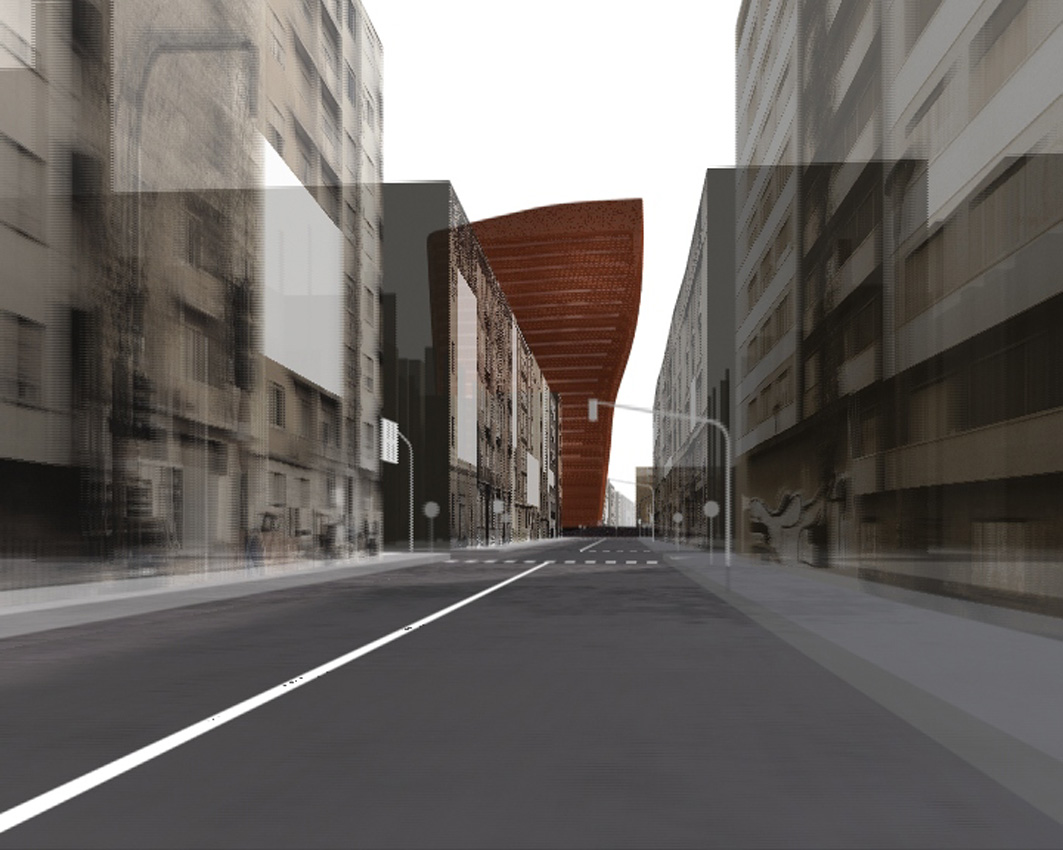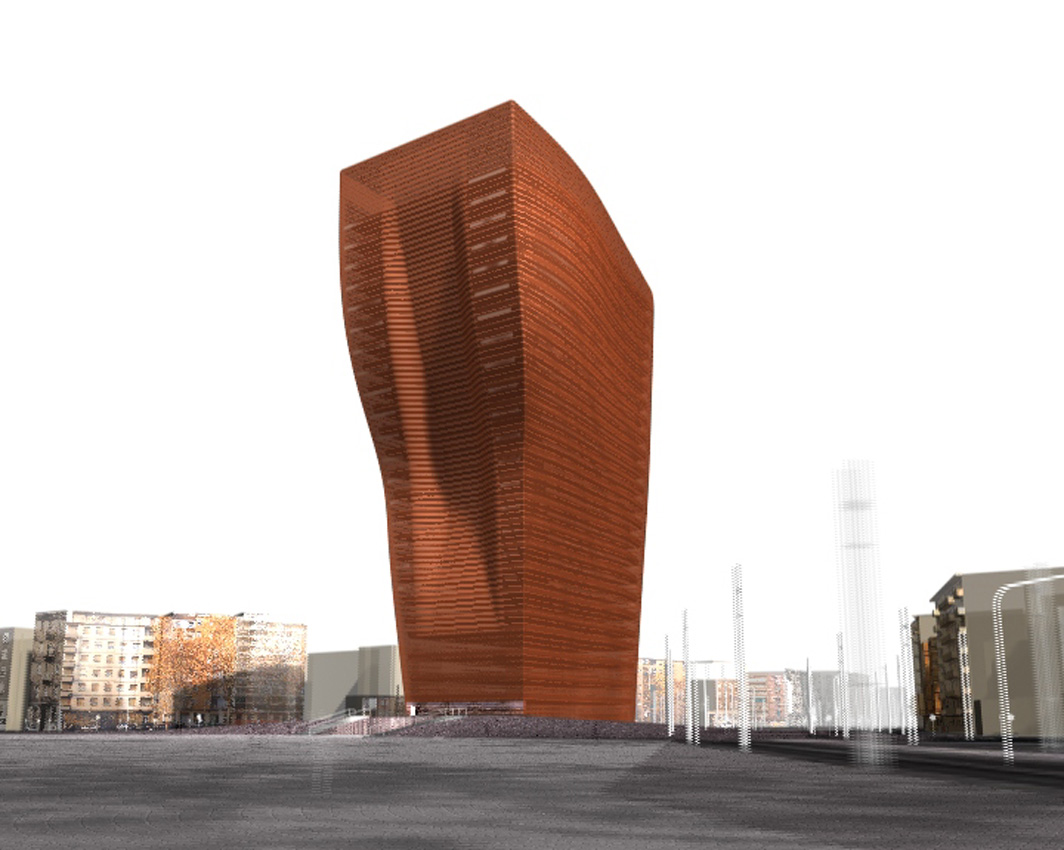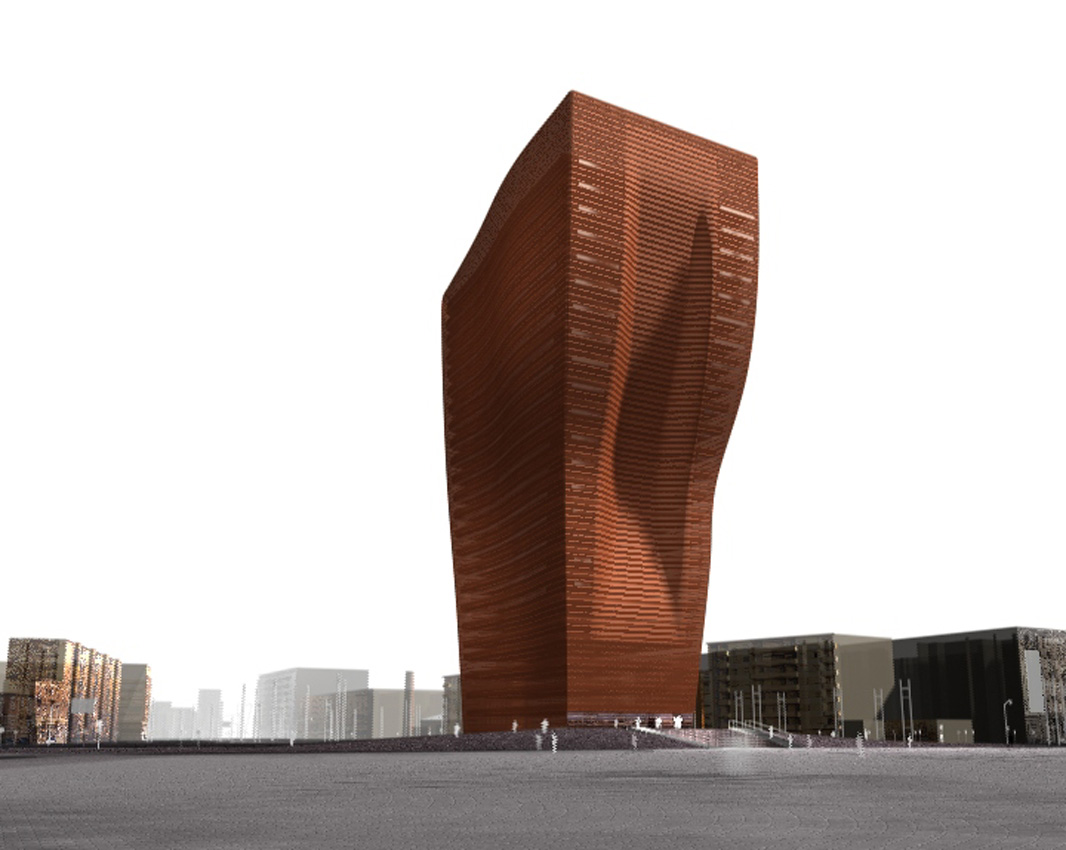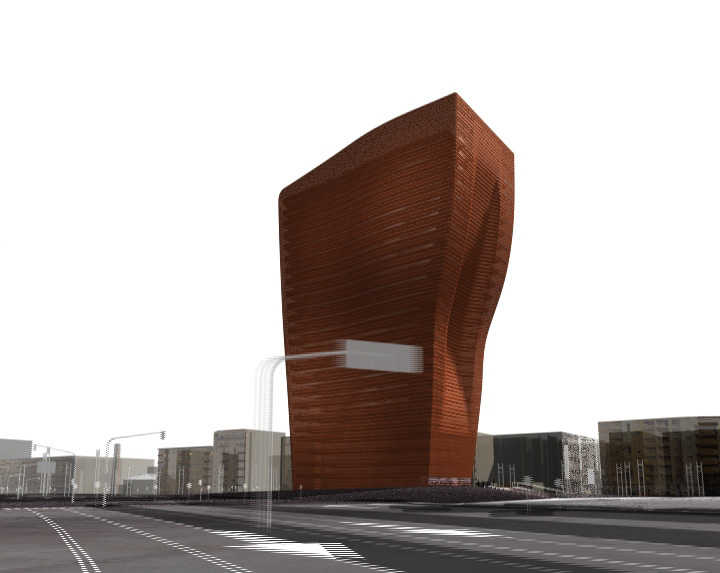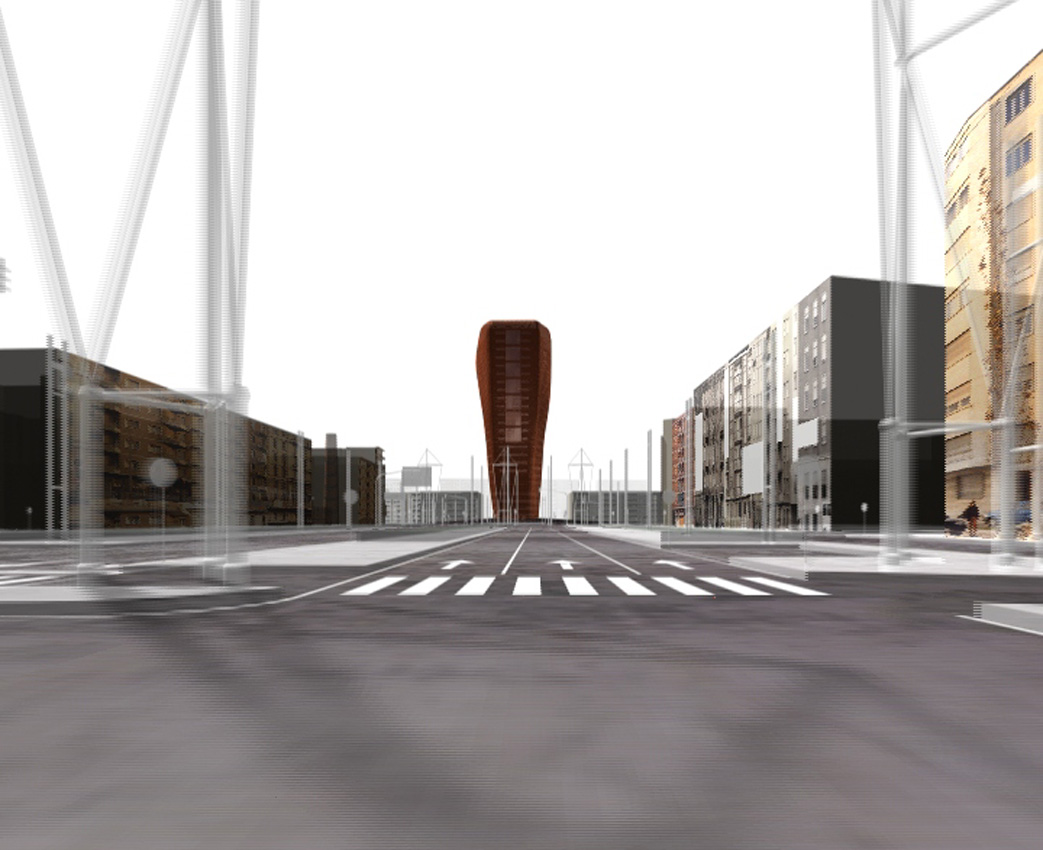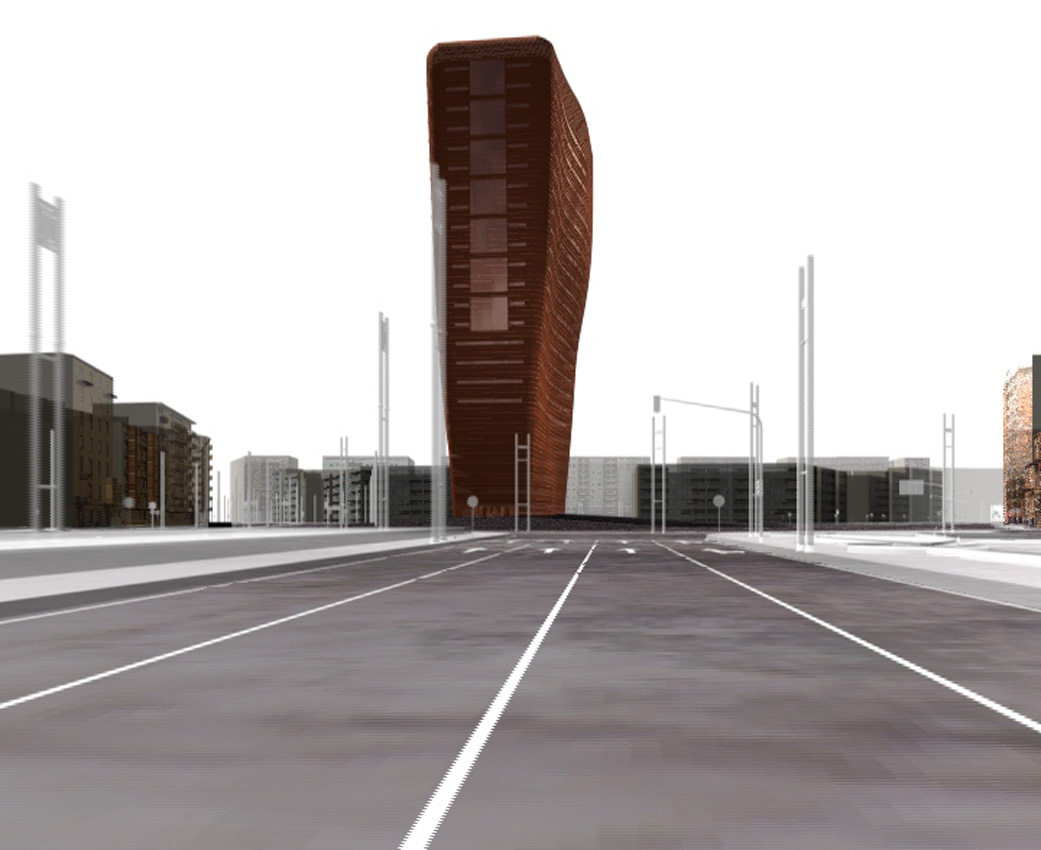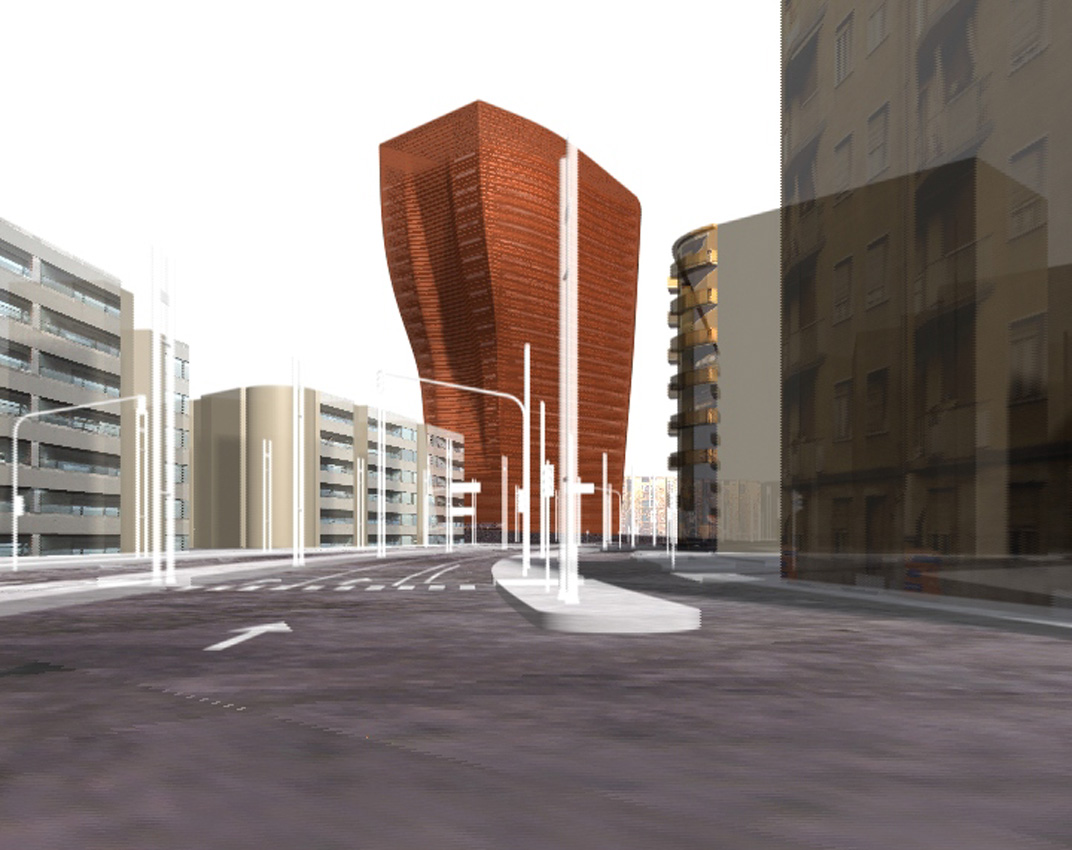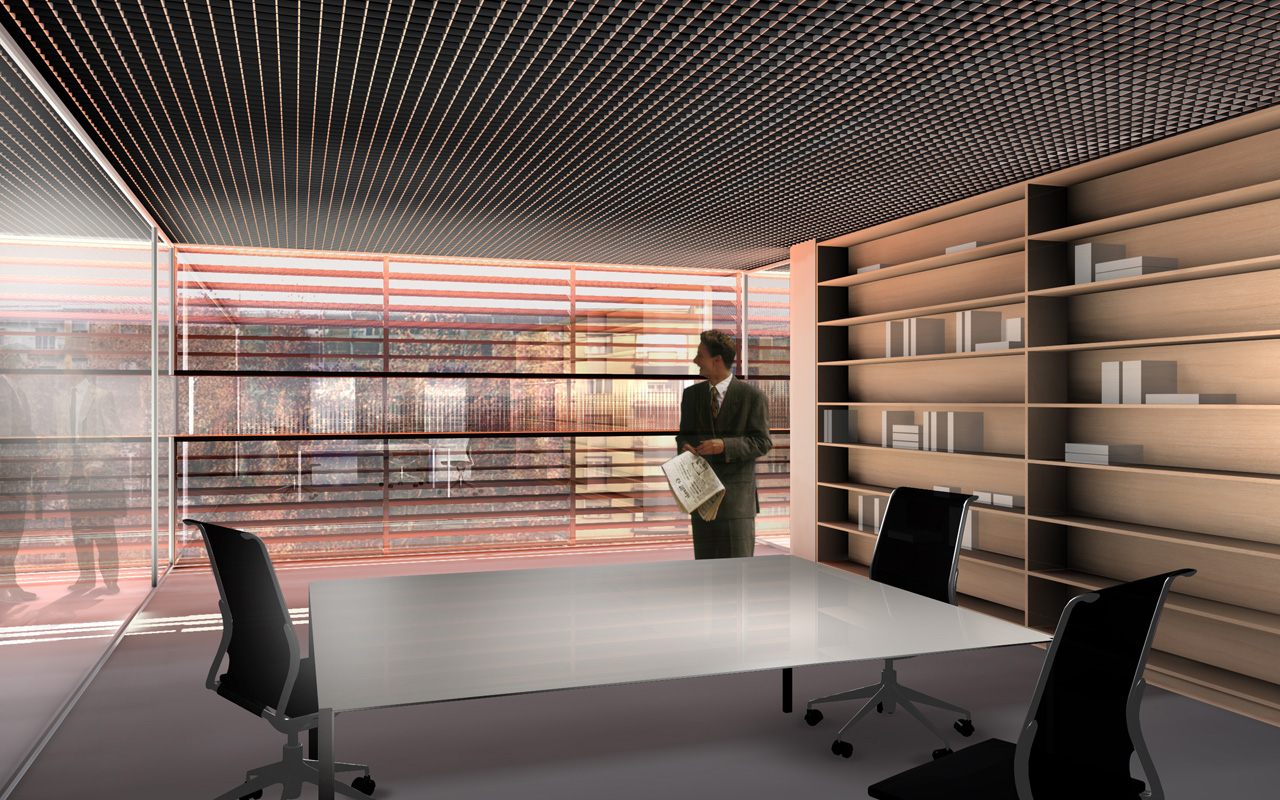Piedmont Regional Council
- Torino, Italy
For a democratic image of monumentality or a contemporary symbol of regional identity
The option of creating a 100-meter-high tower at the end of a vista on a kilometre-long scale is a strong but dangerous one.
It would be tempting to erect an object symbolic of power in the most authoritarian and totalitarian historical tradition, but asserting the monumental as caricature would only take us back to examples of the worst anti-democratic architecture.
We all carry memories of Stalinist and Fascist images:
- Heavy buildings made of stone or granite plonked on top of large square or orthogonal bases and with tall doors and majestic staircases.
- Structures whose proportions and decor are the hallmarks of an ambition to defy eternity.
History provides too many examples of the kind.
Luckily, our era strives to be different.
I reject the old vocabulary: I make gestures that oppose that semantics.
On the other hand, I think it would be a positive thing if the Turin skyline included a building symbolic of regional democratic power, a building that became the strongest possible gesture to balance the impact of the Mole Antonelliana museum, which has an impact that’s too big for its program.
So I’m playing with the proposed scale, and fully own the impact of such a gesture since, here, the visible automatically becomes supervisible.
Another danger would be to design the tower as a simple functional office building, one that’s just bigger than the rest. It would then be an obvious symbol of technocracy and of the regional institution’s lack of identity.
As the opposite of all that, I propose an organic object that emerges from the ground; a building that’s attractive because it’s a bit mysterious; a building that’s not quite symmetrical, with a base smaller than its top; a building that’s brick-coloured ‘like many Piedmontese constructions’, and that completely changes shape depending on the perspective.
From a distance, from the avenue Mediterraneo, it will be tall and narrow, with a slightly indistinct outline, like an immense menhir. From the strada Rivalta, a curved profile will emerge from the alignment; then, finally, when you circle around it, the tower’s shape will shift, it will be an enigma.
From close up, there’ll be no flight of steps, just a very slightly modulated floor, and low wide glass doors that invite you inside, with clear glass over the lobby and lifts.
The tower’s materiality will be light, a mix of brick-coloured cladding and glass.
Its rounded corners will be transparent, the cladding here and there creating vague mirages.
At times the glass curtain walls will turn different shades of brick.
The building will form a glass monolith surrounded by brick lace, a material that will be invisible when seen from a distance, where only the colour will be perceptible.
Horizontal in its proportions, the lobby will be a reception area and a place to get your bearings in, from where you’ll be able to see the cars below in a visitors’ car park designed to look like an extension of the lobby.
A cafeteria located in the ‘bow’ will give it a dimension of urbanity and humanity.
The glazed lifts on the south façade will be immediately identifiable, and will prompt you to take one up to see the amazing panorama.
Upstairs, a large waiting room with a view will treat visitors with respect.
The hallway serving the offices will wind around a central well, bathed in natural light and traversed by a vertical garden planted over an inclined wall using above-ground plant technology.
The offices will have completely glazed storage units protected by metallic blinds in matt brick whose orientation will allow people to let in sunlight at the same time as having a view of the horizon and of what’s happening at ground level.
The assessors’ offices, stretching to double height, will benefit from the panoramic view of the Corso Mediterraneo axis.
The top floors will be democratically reserved for rooms designed for conferences, meetings and receptions, and complete with a restaurant with panoramic views.
Everything is designed around the joy of working here or the privilege of being looked after here.
It will offer a different image for a democratic institution, the image of modernity at the dawn of this new century.
Jean Nouvel
